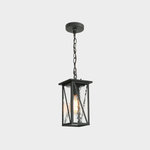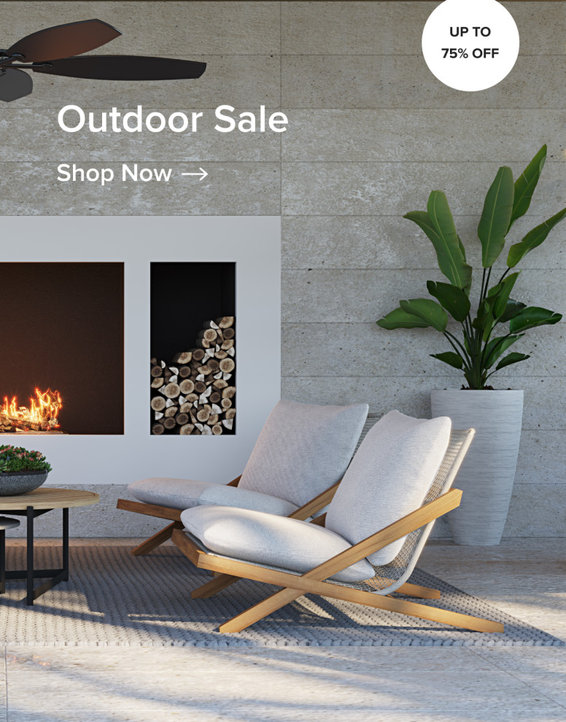10 Things to Consider When Choosing an Outdoor Fire Feature
Think about your property, budget, style and other factors to get a fireplace or fire pit that suits your space
Fire features are a popular component of outdoor living spaces. Whether it’s their romantic glow or the warmth they provide during the cold seasons, fire pits and outdoor fireplaces are wonderful for enhancing outdoor living and hosting.
When planning an outdoor living space, many homeowners wrestle with deciding which fire feature is best suited for their home and lifestyle. A fire pit or an outdoor fireplace? Gas or wood-burning? This guide will help you think through your options and lead you to the fire feature that’s best for you.
When planning an outdoor living space, many homeowners wrestle with deciding which fire feature is best suited for their home and lifestyle. A fire pit or an outdoor fireplace? Gas or wood-burning? This guide will help you think through your options and lead you to the fire feature that’s best for you.
Building codes for wood-burning fireplaces typically require chimney heights to go 2 feet higher than any roofline within a certain distance. Though this doesn’t restrict the feature, the cost of adding a tall wood-burning fireplace might be outside of your budget.
Find a landscape contractor near you
Find a landscape contractor near you
If you have property constraints, consider a gas feature. Because they offer a controlled burn without floating ashes and embers, gas fire features have far more placement versatility than their wood-burning counterparts. They can be placed closer to the home, incorporated into other features — tables, fountains and outdoor kitchens — and located underneath structures such as pergolas and pavilions.
Need a pro for your general contracting project?
Let Houzz find the best pros for you
Let Houzz find the best pros for you
2. Budget
Budget is sometimes the deciding factor in choosing a fire feature. While product prices can vary significantly depending on the craftsmanship and design, an outdoor fireplace is always more expensive than a fire pit. Expect to pay between $1,500 and $6,500 for a fire pit and between $10,000 and $25,000 for an outdoor fireplace built by a reputable contractor.
Budget is sometimes the deciding factor in choosing a fire feature. While product prices can vary significantly depending on the craftsmanship and design, an outdoor fireplace is always more expensive than a fire pit. Expect to pay between $1,500 and $6,500 for a fire pit and between $10,000 and $25,000 for an outdoor fireplace built by a reputable contractor.
Gas features cost an additional $3,500 to $10,000. Expect to pay $1,500 to $6,000 for the burner system and decorative elements (logs, lava rocks, fire glass) and $2,000 to $4,000 for installing a permitted gas line.
Not sure where to start on your home project? Learn the basics
Not sure where to start on your home project? Learn the basics
3. Style
As with every element of your outdoor living space, it’s essential to consider your intended use of a fire feature. If you’re looking to create a casual atmosphere with the traditional campfire experience, a wood-burning fire pit is your best fit. It’s perfect for long nights of storytelling and toasting marshmallows for s’mores.
Shop for a fire pit on Houzz
As with every element of your outdoor living space, it’s essential to consider your intended use of a fire feature. If you’re looking to create a casual atmosphere with the traditional campfire experience, a wood-burning fire pit is your best fit. It’s perfect for long nights of storytelling and toasting marshmallows for s’mores.
Shop for a fire pit on Houzz
If you’re looking to create a more formal and elegant experience, you might prefer a fireplace. Fireplaces tend to be larger and have a grander appearance than fire pits.
Find an outdoor fireplace pro
Find an outdoor fireplace pro
4. Convenience
When it comes to convenience, gas fire features are unbeatable. You won’t have to buy, chop, stack or season any wood, there will be no wood ashes to clean up, and you’ll be able to get a fire going in less than 10 seconds. That makes them perfect for both long, planned evenings with friends and impromptu nightcaps.
When it comes to convenience, gas fire features are unbeatable. You won’t have to buy, chop, stack or season any wood, there will be no wood ashes to clean up, and you’ll be able to get a fire going in less than 10 seconds. That makes them perfect for both long, planned evenings with friends and impromptu nightcaps.
5. Number of People
Be sure to consider how many people you’ll want to accommodate around the fire. For outdoor fireplaces, most traditional furniture arrangements include seating for five to six people. Because of this, fireplaces are often preferred by homeowners who host smaller, more intimate gatherings.
Around six to 10 people can fit comfortably around most residential fire pits. Larger fire pits of course can accommodate even more people, making them a better choice if you want to host larger gatherings.
Be sure to consider how many people you’ll want to accommodate around the fire. For outdoor fireplaces, most traditional furniture arrangements include seating for five to six people. Because of this, fireplaces are often preferred by homeowners who host smaller, more intimate gatherings.
Around six to 10 people can fit comfortably around most residential fire pits. Larger fire pits of course can accommodate even more people, making them a better choice if you want to host larger gatherings.
6. Ambiance
The scent and sound of a crackling wood fire create an enchanting ambiance that is unmatched by any gas feature. Additionally, the rich glow and warmth of a wood-burning fire offer a greater sense of comfort than gas flames, which tend to be brighter and more sterile. Go for a wood-burning fireplace over a fire pit for the most elegance.
The scent and sound of a crackling wood fire create an enchanting ambiance that is unmatched by any gas feature. Additionally, the rich glow and warmth of a wood-burning fire offer a greater sense of comfort than gas flames, which tend to be brighter and more sterile. Go for a wood-burning fireplace over a fire pit for the most elegance.
7. Smoke and Smell
Though most people love the scent of a wood-burning fire, the smoke and the smell that can stick to you well into the following day are drawbacks. If these bother you, a gas feature might be your best bet.
5 Patios With Fire Features That Are Smoke-Free
Though most people love the scent of a wood-burning fire, the smoke and the smell that can stick to you well into the following day are drawbacks. If these bother you, a gas feature might be your best bet.
5 Patios With Fire Features That Are Smoke-Free
8. Heat Output
Though all fire features put out heat, wood-burning features typically provide more than their gas counterparts. Some gas burners do generate an equivalent amount of British thermal units (BTUs) as wood-burning options, but many localities regulate their use. If warmth is a driving factor in your decision-making, a wood-burning model is the best choice.
Also consider that unlike fireplaces, which put out a very directed warmth, fire pits project heat in all directions, creating a much warmer space. Additionally, fire pits typically are furnished with individual chairs, making it easier for someone cold to pull in closer. It’s difficult to do that with the sofas used with traditional fireplaces.
Though all fire features put out heat, wood-burning features typically provide more than their gas counterparts. Some gas burners do generate an equivalent amount of British thermal units (BTUs) as wood-burning options, but many localities regulate their use. If warmth is a driving factor in your decision-making, a wood-burning model is the best choice.
Also consider that unlike fireplaces, which put out a very directed warmth, fire pits project heat in all directions, creating a much warmer space. Additionally, fire pits typically are furnished with individual chairs, making it easier for someone cold to pull in closer. It’s difficult to do that with the sofas used with traditional fireplaces.
9. Maintenance
Though all fire features require low maintenance, gas features tend to require the least amount. With a wood-burning feature, you must stay on top of your wood supply and make sure it remains seasoned. Additionally, failure to remove old ashes before use will limit oxygen flow, resulting in difficulty starting and maintaining a strong fire.
Though all fire features require low maintenance, gas features tend to require the least amount. With a wood-burning feature, you must stay on top of your wood supply and make sure it remains seasoned. Additionally, failure to remove old ashes before use will limit oxygen flow, resulting in difficulty starting and maintaining a strong fire.
10. Multiple Fire Features
If your space and budget allow, consider designing your space to include both a fire pit and a fireplace, with one being gas and the other being wood-burning. Though it would add to the cost of your project, the increase in your use and enjoyment of the space could be worth the investment.
More on Houzz
10 Things to Know About Buying a Fire Pit for Your Yard
Browse more photos of fire features for inspiration
Work with a landscape designer
Shop for your outdoor space
If your space and budget allow, consider designing your space to include both a fire pit and a fireplace, with one being gas and the other being wood-burning. Though it would add to the cost of your project, the increase in your use and enjoyment of the space could be worth the investment.
More on Houzz
10 Things to Know About Buying a Fire Pit for Your Yard
Browse more photos of fire features for inspiration
Work with a landscape designer
Shop for your outdoor space















Before getting your heart set on a specific feature, make sure you don’t have any property constraints related to homeowners association (HOA) rules, building codes and fire regulations. For example, it’s not uncommon for HOAs in wooded neighborhoods to ban open fires, meaning wood-burning fire pits are out of the question.
Additionally, some building codes and fire regulations don’t allow open fires within a certain number of feet of flammable structures, such as a house, shed or fence; these regulations can prevent wood-burning fire pits in backyards with limited space.